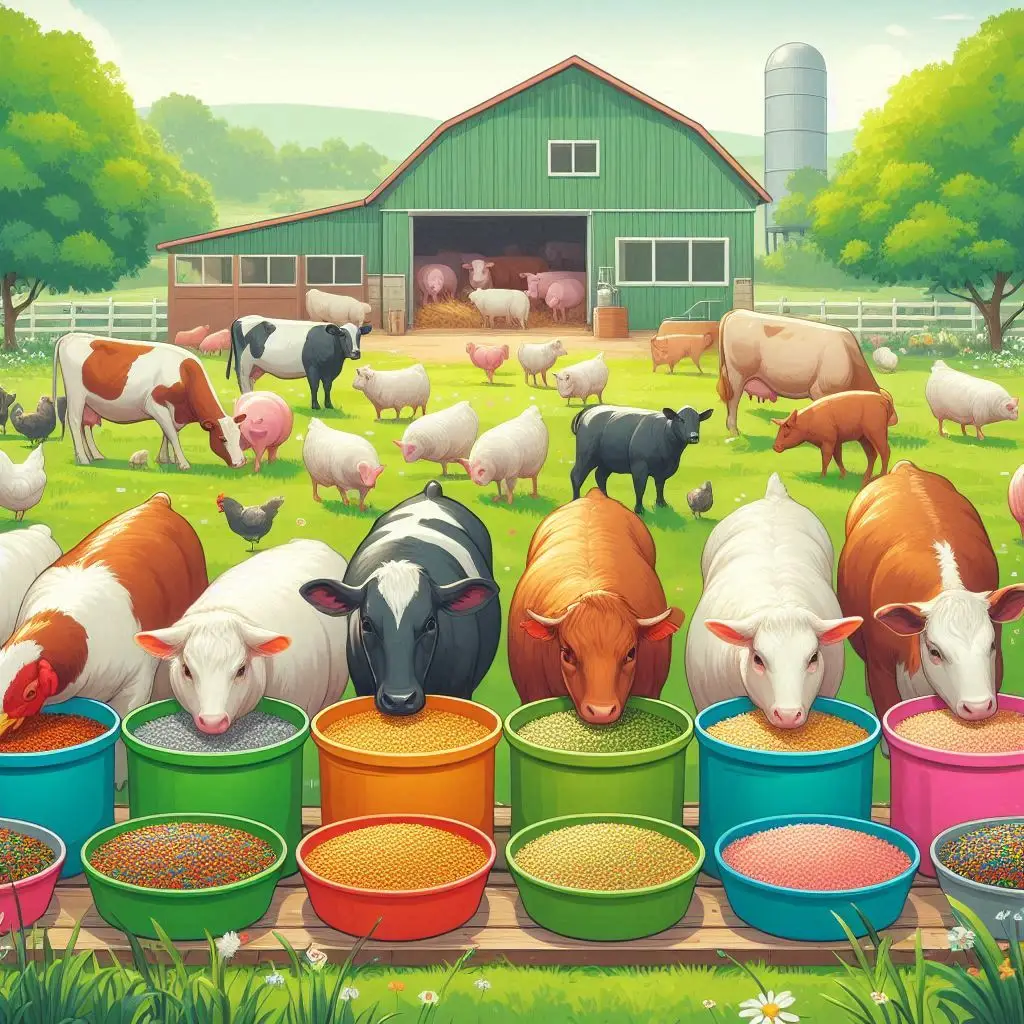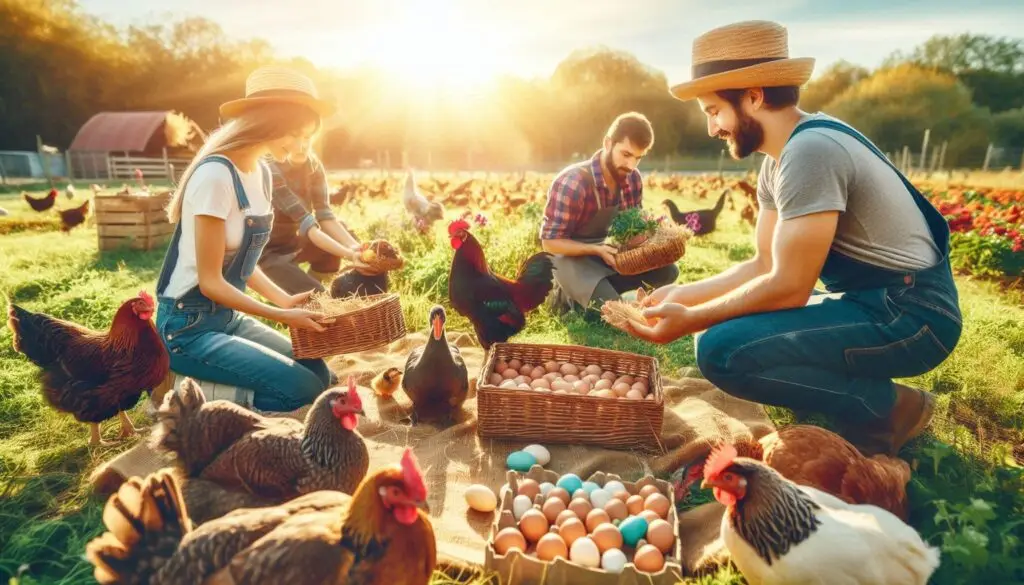Feeding of Goats for Meat and Milk Production

Goats are among the most versatile livestock, valued for their meat, milk, fiber, and even as pets. Their adaptability to various environments and their ability to thrive on a wide range of forage types make them an excellent choice for small and large-scale farming operations. This article explores the nutritional needs, feeding strategies, and management practices essential for optimizing meat and milk production in goats.
Nutritional Requirements
Basic Nutritional Needs
To ensure optimal health and productivity, goats require a balanced diet that includes:
- Water: Water is the most critical nutrient for goats. They require clean, fresh water at all times. A lactating doe can consume up to 3 gallons of water per day, while dry goats might need about 1-2 gallons. Water quality is crucial; it should be free from contaminants and changed regularly.
- Energy: Energy is primarily derived from carbohydrates and fats. Goats require energy for maintenance, growth, reproduction, and milk production. High-quality forage, grains, and concentrates are essential energy sources.
- Protein: Protein is vital for growth, reproduction, and milk production. Goats require different protein levels depending on their life stage. For instance, lactating does need a higher protein intake compared to dry does.
- Minerals and Vitamins: Essential minerals (like calcium, phosphorus, magnesium, and salt) and vitamins (A, D, and E) are crucial for various bodily functions, including bone development and immune function.
Specific Nutritional Needs for Meat Goats
Meat goats, such as Boer goats, have distinct nutritional requirements compared to dairy goats.
- Forage and Browse: Meat goats are natural browsers and prefer shrubs, trees, and other fibrous materials. They can utilize forages that other livestock may find unpalatable due to their unique digestive systems.
- Concentrates: While forage is essential, concentrated feeds should be strategically used to ensure goats meet their energy and protein needs, especially during periods of rapid growth or lactation. A typical concentrate mix may include grains like corn, oats, or barley, along with protein sources like soybean meal.
Feeding Strategies
Forage-Based Feeding
Goats are natural browsers and prefer to eat leaves, shrubs, and other fibrous materials. This feeding behavior allows them to thrive in environments where other livestock may struggle.
- Grazing Management: Implementing a rotational grazing system can help maintain pasture quality and ensure goats have access to fresh forage. This system allows for the natural regeneration of grasses and shrubs, preventing overgrazing and promoting biodiversity.
- Types of Forage: High-quality forage types include alfalfa, clover, and various grasses. Legumes are particularly beneficial as they provide higher protein levels and improve soil fertility through nitrogen fixation.
- Supplementation: During periods of low forage availability (e.g., winter), goats should be supplemented with high-quality hay or silage. Concentrate feeds may also be necessary to meet their nutritional requirements.
Concentrate Feeding
Concentrates are essential for meeting the energy and protein needs of goats, particularly during lactation and growth phases.
- Formulating Rations: A balanced concentrate mix can include ingredients such as corn, soybean meal, and minerals. For example, a typical concentrate mix might consist of 1 part wheat bran, 2 parts maize grain, and 1 part linseed cake.
- Adjusting for Production: The nutritional requirements for lactating does differ significantly from those of dry does or growing kids. Adjusting rations based on production stage is crucial for optimizing health and productivity.
- Feeding Rates: The amount of concentrate should be gradually increased based on the goat’s body condition and production needs. For instance, lactating does may require 0.5 to 1 pound of concentrate per day, while growing kids may need 1 to 2 pounds.
Special Feeding Considerations
Lactating Goats
Lactating goats have higher nutritional needs due to the energy required for milk production.
- Increased Energy and Protein: The diet should be rich in energy and protein to support milk production. For instance, to produce 1 liter of milk with 4% fat, a goat may require approximately 60 grams of digestible crude protein (DCP) and 285 grams of starch equivalent.
- Feeding Frequency: It’s advisable to feed lactating goats smaller, more frequent meals to ensure they receive adequate nutrition without overloading their digestive systems. This approach can also help maintain a consistent milk supply.
- Quality of Forage: The quality of forage offered to lactating does should be high, as it directly impacts milk quality. Forage should be tested for nutritional content to ensure it meets the needs of lactating goats.
Pregnant Goats
Pregnant does require special attention to their diet, particularly in the last trimester.
- Increased Nutritional Intake: The nutritional content of their feed should be increased to support fetal growth. A week before kidding, does should be fed more succulent foods to prepare for lactation.
- Balanced Diet: The diet should include a mix of high-quality forage and concentrates, ensuring that does receive adequate protein, energy, and minerals.
- Post-Kidding Care: After kidding, the diet should be adjusted to include more fibrous materials to help the goat’s digestive system recover from the stress of lactation. Monitoring body condition is crucial during this period.
Feeding Young Stock
The growth and development of young goats are critical for the success of a goat farming operation.
Early Nutrition
Kids should receive colostrum shortly after birth to ensure they get essential antibodies.
- Importance of Colostrum: Colostrum is rich in nutrients and antibodies that help establish the kid’s immune system. It is crucial that kids consume colostrum within the first few hours of life.
- Transitioning to Solid Feed: As kids grow, their diet should gradually transition to high-quality forage and concentrates. Starting with a creep feed can help ensure they receive adequate nutrition while still nursing.
Grouping by Nutritional Needs
Young goats should be grouped according to their nutritional needs to ensure they receive appropriate feed.
- Weaning: Kids can typically be weaned at around 8-12 weeks of age, depending on their growth rates and the availability of solid feed. After weaning, they should be provided with a balanced diet that supports their growth.
- Growth Rates: Monitoring growth rates is essential. Ideal weight gain for kids should be around 0.5 to 1 pound per day, depending on the breed and feeding practices.
Health and Management Practices
Disease Prevention
Feeding practices play a crucial role in the overall health of goats.
- Cleanliness: Goats are sensitive animals that require clean feeding environments. Dirty feed and water can lead to various health issues, including gastrointestinal problems and infections.
- Regular Health Checks: Monitoring the health of goats and providing vaccinations as needed can prevent disease outbreaks that may arise from poor nutrition or unsanitary conditions. Regular deworming and hoof trimming are also essential.
Record Keeping
Maintaining detailed records of feeding practices, health checks, and production levels can help identify trends and improve management strategies over time.
- Tracking Production: Keeping track of milk production, weight gain, and feed intake can help farmers make informed decisions about feeding strategies and overall management.
- Adjusting Feeding Practices: Records can help identify any deficiencies in the diet or management practices, allowing for timely adjustments to optimize health and productivity.
Economic Considerations
Cost of Feeding
Feeding costs can significantly impact the profitability of goat farming.
- Balancing Quality and Cost: While high-quality feed is essential for optimal production, it’s important to balance quality with cost. Farmers should seek out local suppliers and consider bulk purchasing to reduce feed costs.
- Utilizing By-Products: Incorporating agricultural by-products (like beet pulp or distiller’s grains) can help lower feed costs while still providing essential nutrients.
Return on Investment
Investing in proper feeding practices can lead to higher returns through improved meat and milk production.
- Improved Growth Rates: Proper nutrition can lead to faster growth rates in meat goats, allowing for earlier market readiness and increased profitability.
- Higher Milk Production: For dairy goats, a well-balanced diet can lead to increased milk production and improved milk quality, enhancing market value.
Sustainable Practices
Environmental Considerations
Sustainable feeding practices can help reduce the environmental impact of goat farming.
- Rotational Grazing: This practice not only improves pasture health but also reduces soil erosion and promotes biodiversity. It can help maintain a healthy ecosystem while providing quality forage for goats.
- Waste Management: Proper management of manure can enhance soil fertility and reduce pollution. Composting goat manure can provide a valuable organic fertilizer for crops.
Integrating Agroecology
Agroecological practices can enhance the sustainability of goat farming systems.
- Diverse Forage Systems: Planting a variety of forage species can improve soil health and provide a more balanced diet for goats. This diversity can also attract beneficial insects and reduce pest populations.
- Community Involvement: Engaging with local communities to share knowledge and resources can promote sustainable practices and improve overall farm productivity.
Conclusion
Feeding goats for meat and milk production requires a comprehensive understanding of their nutritional needs, feeding behaviors, and management practices. By providing balanced diets tailored to the specific needs of meat and dairy goats, producers can optimize health, productivity, and profitability.
For more pearls of Vets Wisdom:






Responses